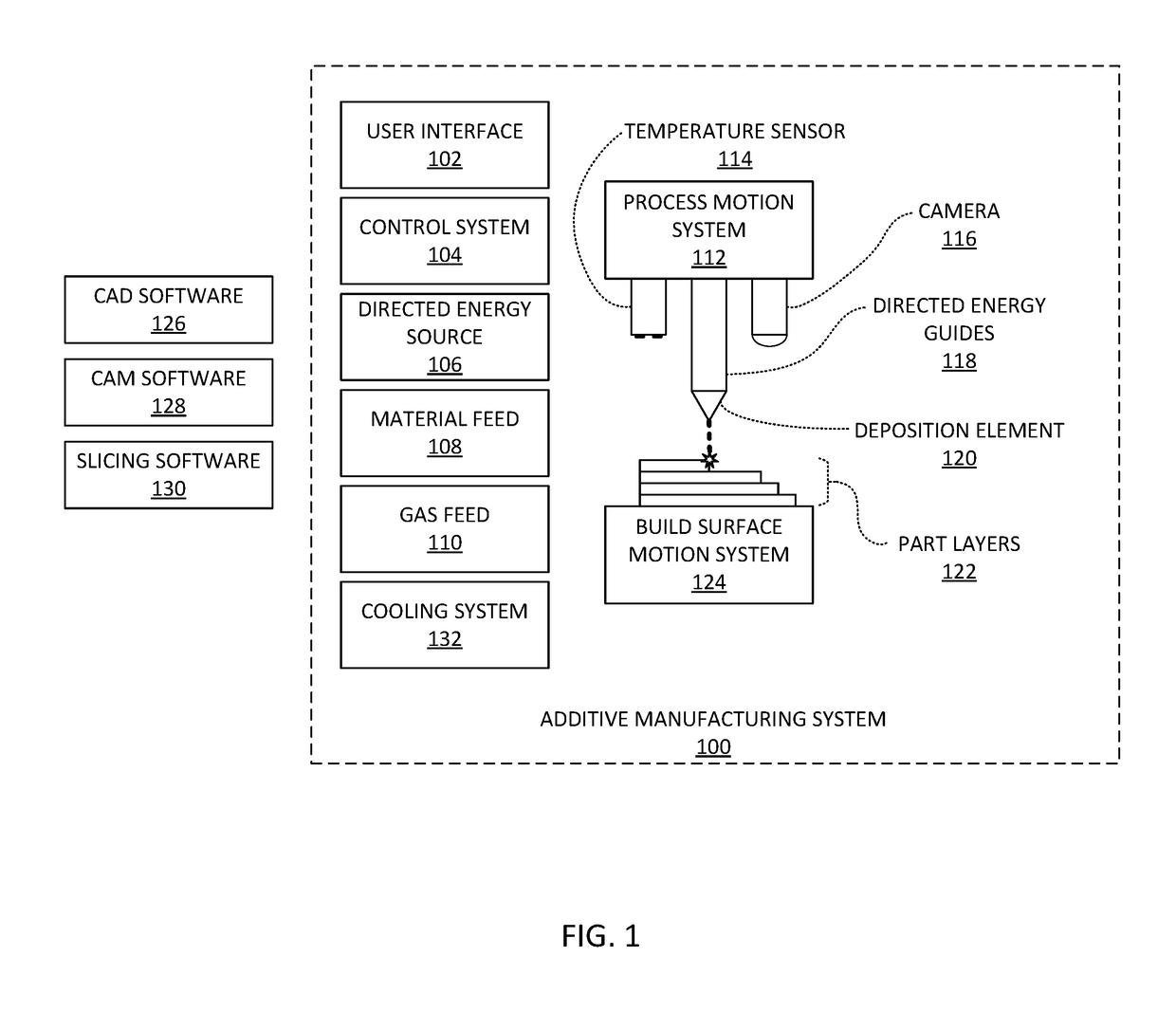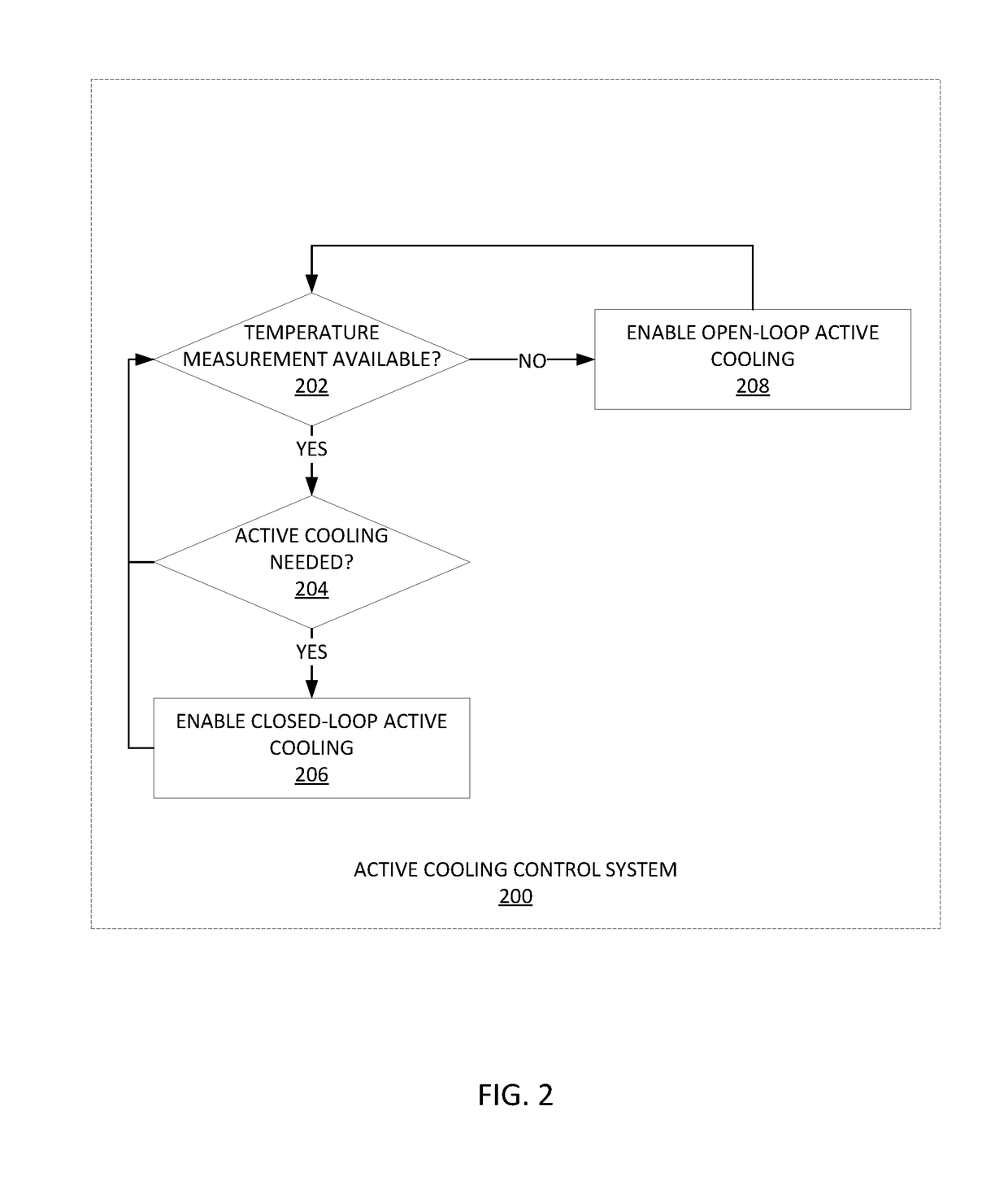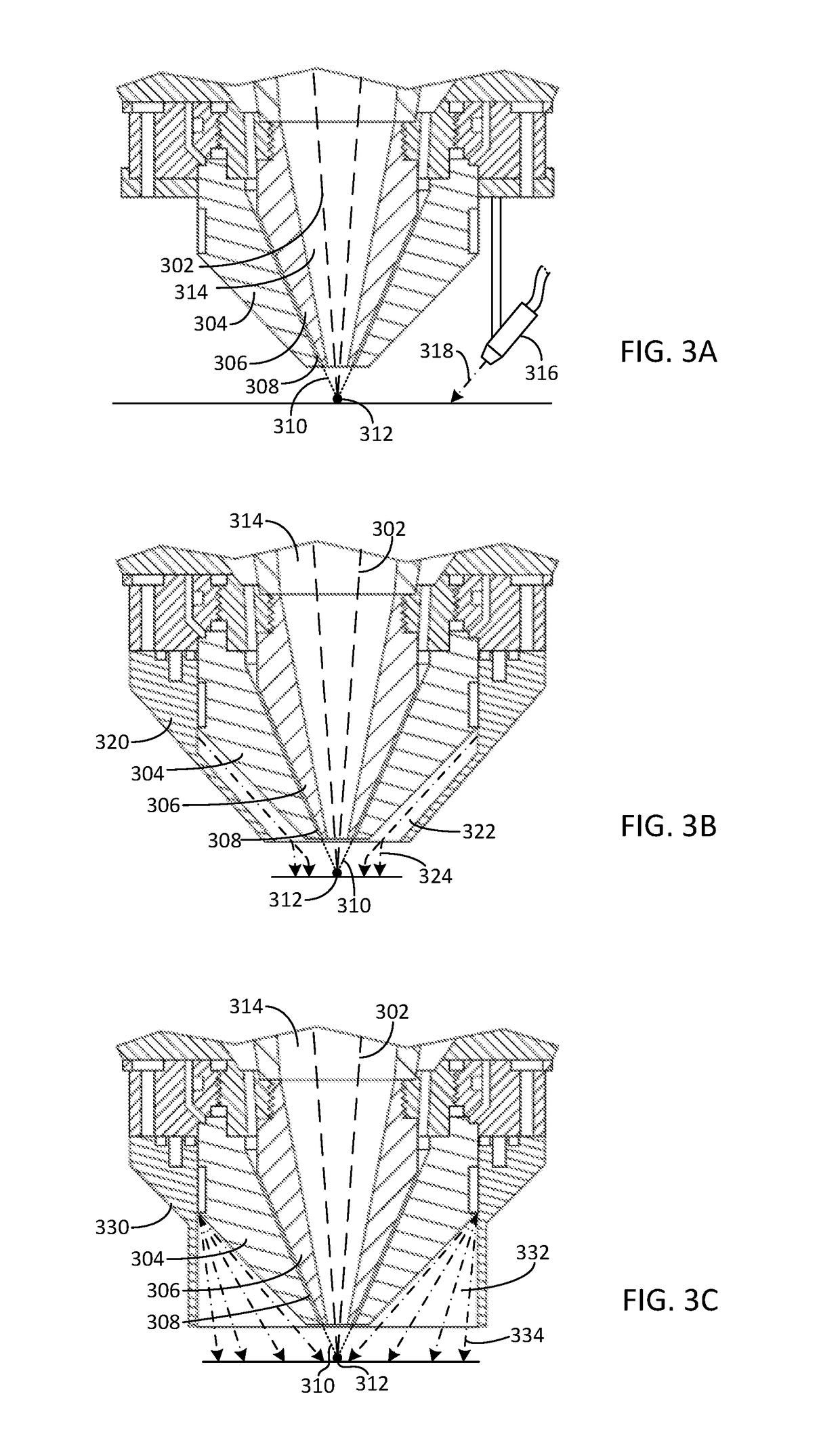Active cooling of additive manufacturing process
a technology of additive manufacturing and active cooling, which is applied in the direction of manufacturing tools, soldering devices, auxillary welding devices, etc., can solve the problems of affecting the cooling rate of the structure, affecting the underlying structure of the built piece, and degrading the physical properties of the built pi
- Summary
- Abstract
- Description
- Claims
- Application Information
AI Technical Summary
Benefits of technology
Problems solved by technology
Method used
Image
Examples
example additive
Manufacturing System
[0024]FIG. 1 depicts an example of an additive manufacturing system 100. Additive manufacturing system 100 includes a user interface 102. User interface 102 may be, for example, a graphical user interface comprising hardware and software controls for controlling additive manufacturing system 100. In some examples, user interface 102 may be integral with additive manufacturing system 100 while in other examples user interface 102 may be remote from additive manufacturing system 100 (e.g., on a remote computer such as a laptop computer or a personal electronic device).
[0025]Additive manufacturing system 100 also includes a control system 104. In this example, control system 104 is in data communication with user interface 102 as well as directed energy source 106, material feed 108, gas feed 110, process motion system 112, temperature sensor 114, camera 116, build surface motion system 124, and cooling system 132. In other examples, control system 104 may be in dat...
PUM
| Property | Measurement | Unit |
|---|---|---|
| temperature | aaaaa | aaaaa |
| flow rate | aaaaa | aaaaa |
| energy | aaaaa | aaaaa |
Abstract
Description
Claims
Application Information
 Login to View More
Login to View More - R&D
- Intellectual Property
- Life Sciences
- Materials
- Tech Scout
- Unparalleled Data Quality
- Higher Quality Content
- 60% Fewer Hallucinations
Browse by: Latest US Patents, China's latest patents, Technical Efficacy Thesaurus, Application Domain, Technology Topic, Popular Technical Reports.
© 2025 PatSnap. All rights reserved.Legal|Privacy policy|Modern Slavery Act Transparency Statement|Sitemap|About US| Contact US: help@patsnap.com



